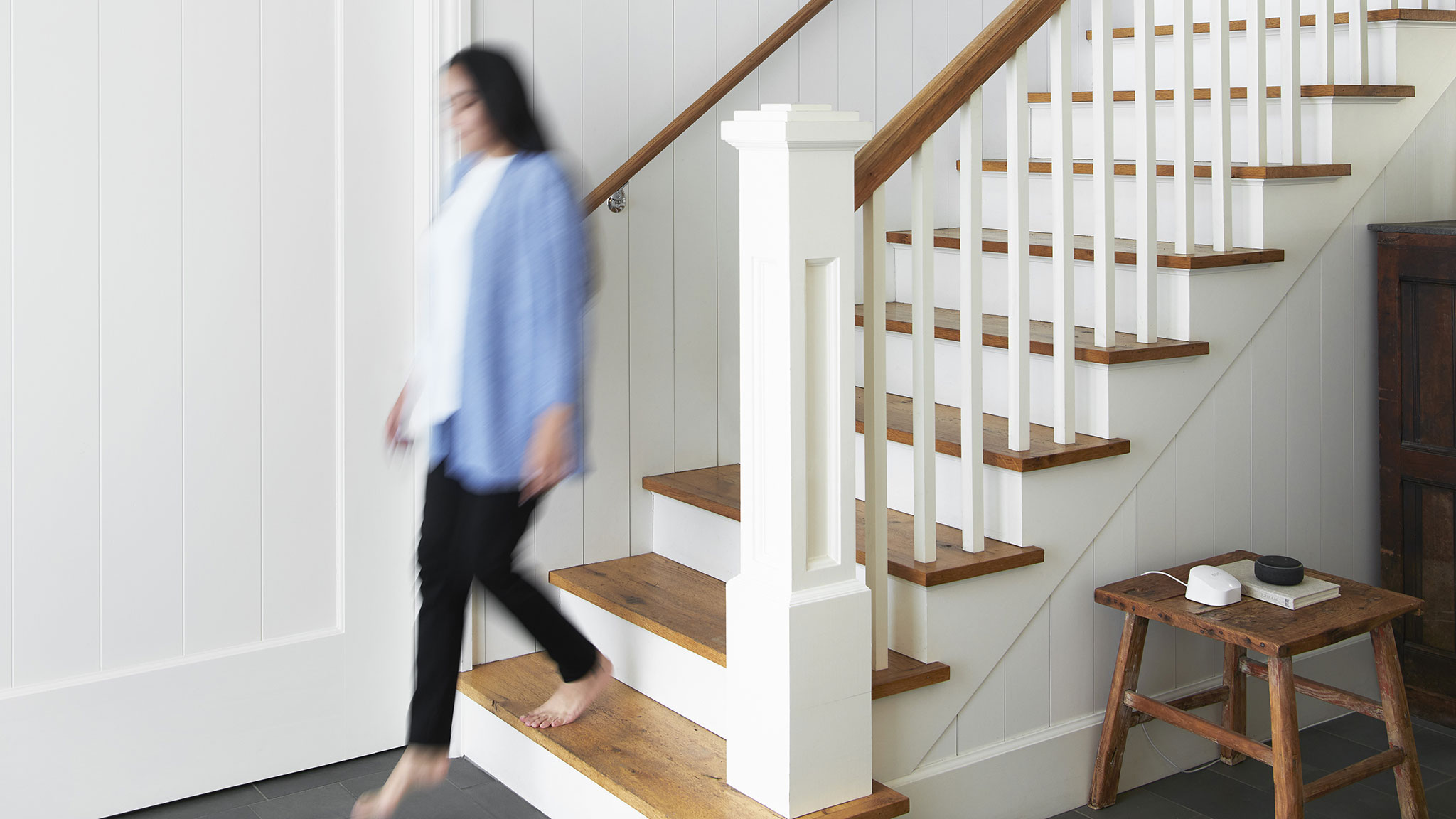How to fix Wi-Fi problems with a mesh network: get great coverage everywhere
Frustrated with bad wireless coverage? A mesh network is the solution

Imagine, if you will, that you just recently purchased a new wireless router. You've got a bunch of smart devices you want to hook up to it, everything from the lights in your bedroom to the TV in your den. You're going to bring your entire home online – you're going to finally get in on the smart home revolution everyone's been buzzing about.
There's just one problem. The Wi-Fi signal your TV's receiving is so spotty and weak that any attempt to watch Netflix simply results in an endless buffer cycle. And that isn't even going into the fact that your basement is a complete dead zone, utterly devoid of even a faint Wi-Fi signal.
The jury is still out on which is more frustrating.
For years, this is something we've sort of just... accepted about wireless networks. The further you are from the router, the weaker and slower your signal is going to be. And if there are any materials like concrete between you and your access point, good luck getting anything other than a single bar.
It doesn't have to be this way, though. With a mesh network, you can put the myriad frustrations created by poor Wi-Fi coverage behind you. Before we get into that, though, let's talk a little bit about what causes these coverage issues.
Why do wireless dead zones exist?

It's easy to forget that Wi-Fi isn't some uninterruptible aura of internet connectivity. It's the result of a constant radio signal being broadcast by an access point. And like any radio signal, it can be interrupted or distorted by the surrounding environment.
In our experience, physical obstructions are by far the most common cause of signal loss.
Concrete and brickwork are by far the worst culprits here. Really, any kind of worked stone can be bad news for a wireless network. This is because, compared to other building materials like wood and plaster, stonework is significantly more dense.
If it helps, you might think of your wireless signal like a stream of water. If you try to run that water through a piece of cheesecloth, it will continue relatively uninterrupted. Some of the stream may be absorbed, but the rest will go on its way.
If, however, you replace that cheesecloth with a thick towel? Suddenly, everything grinds to a halt. Sure, the water might eventually pass through, but not without great difficulty.
Metal is even worse for Wi-Fi than stone. Because the radio waves that make up a Wi-Fi network are electromagnetic, they're easily captured by any material that easily conducts electricity. While smaller metallic objects such as plates and utensils aren't likely to cause any meaningful interference, materials such as sheet metal or steel framework can cause serious problems.
This is especially evident in older homes, which often feature metallic mesh in the walls or reflective insulation sheathed in aluminum or copper. Tinted windows can also be an issue, as they often contain metallic components. Kitchen appliances such as refrigerators can also cause problems, especially if they're metallic.
Finally, although rare, clear glass can also cause signal interference, due in large part to its reflectivity. You're not likely to notice this to the same extent you would with stone or metal unless your router is positioned very close to something like a mirror or window. Similarly, if you've hidden your access point behind a couch or in a cabinet, you may see some minor signal disruption, as well.
What other factors can cause wireless interference?

Your home's building materials aren't the only thing that can cause coverage issues where your Wi-Fi is concerned.
If, for example, you've too many connected devices, the high volume of traffic can cause network congestion, slowing everything to a crawl. This will likely be noticeable anywhere in your home, but will be especially pronounced in areas where you were already experiencing signal issues. Similarly, if there's too much wireless chatter, you may also experience signal disruptions.
This chatter can have many sources:
- Too many wireless networks nearby.
- Wireless analog devices, such as baby monitors, sound systems, and cameras.
- Certain models of microwave.
- Too many Bluetooth devices.
- Old phones.
The good news is that most of the above cases apply almost entirely to lower frequencies such as 2.4 GHz. This means that dual and tri-band routers rarely suffer from this problem to the extent that it impacts your connectivity. The trade-off is that higher frequencies have greater difficulty penetrating solid objects, meaning that you're going to experience even greater signal loss than you would on lower ones.
In other words, depending on where you live, you may have to choose – do you want your signal disrupted by physical obstacles, or by radio interference?
How can a mesh network improve my Wi-Fi coverage?
With mesh Wi-Fi, you don't need to make that choice. That's because rather than relying upon a single router, a mesh network is configured so that each individual 'node' acts as its own access point. Each node on the network communicates with every other node in real-time, actively determining the best path for the data received from and sent to each connected device.
What this means in plain English is that with a mesh network, you don't need to worry about interference from materials like concrete or poor signal strength at your network's edge. Your network nodes will route your network signal so that you're able to connect to the network from anywhere.Better yet, because each network node is capable of acting as its own router, you'll also experience significantly lower network congestion, which will be especially noticeable if you have a large volume of smart devices and appliances.

Finally, because of how a mesh network is configured, expanding your coverage is as simple as buying additional nodes. There's no need for complicated Wi-Fi extenders or solutions that route your connection through copper wiring. You'll be able to ensure even, reliable Wi-Fi coverage no matter how large your home is.
In short, if you're looking to make dead zones a thing of the past, mesh is the way to go. And if you're looking to invest in mesh, eero is an excellent place to start. The eero Pro 6, for instance, is a powerful, Wi-Fi 6 capable tri-band access point with excellent connectivity, excellent coverage, and speeds of up to a gigabit. It's fully compatible with both the eero 6 mesh router and older eero models.
Both eero solutions can be set up in a matter of minutes. They're equipped with eero's patented TrueMesh technology, designed for intelligent traffic routing, and Zigbee smart home hub for better integration with connected devices. They also offer greatly-enhanced network security courtesy of the eero Secure + service.
You can get both the eero 6 and eero Pro 6 on preorder now – they're set to release on November 2, 2020.
Sign up to the T3 newsletter for smarter living straight to your inbox
Get all the latest news, reviews, deals and buying guides on gorgeous tech, home and active products from the T3 experts
T3.com is one of the UK's leading consumer lifestyle websites, visited by over 10 million people every month. You can follow us on Twitter, Facebook and Instagram. We present products in helpful buying guides and carefully curated deals posts across style, living, auto, smart home, watches, travel, fitness and more. We also have a monthly magazine which you can buy in newsagents or subscribe to online – print and digital versions available.
-
 A new age of humanity wins the Sony World Photography Awards 2025
A new age of humanity wins the Sony World Photography Awards 2025Zed Nelson's Anthropocene Illusion highlights the influence of humans on the environment and the artificial spaces left for wildlife in a powerful set of images to win this year's SWPA Photographer of the Year
By Mat Gallagher
-
 How to watch Mario Kart World Direct – everything you need to know about the Switch 2 launch game
How to watch Mario Kart World Direct – everything you need to know about the Switch 2 launch gameNintendo will host a new Nintendo Direct presentation this week, here's how to watch it live and what to expect
By Rik Henderson
